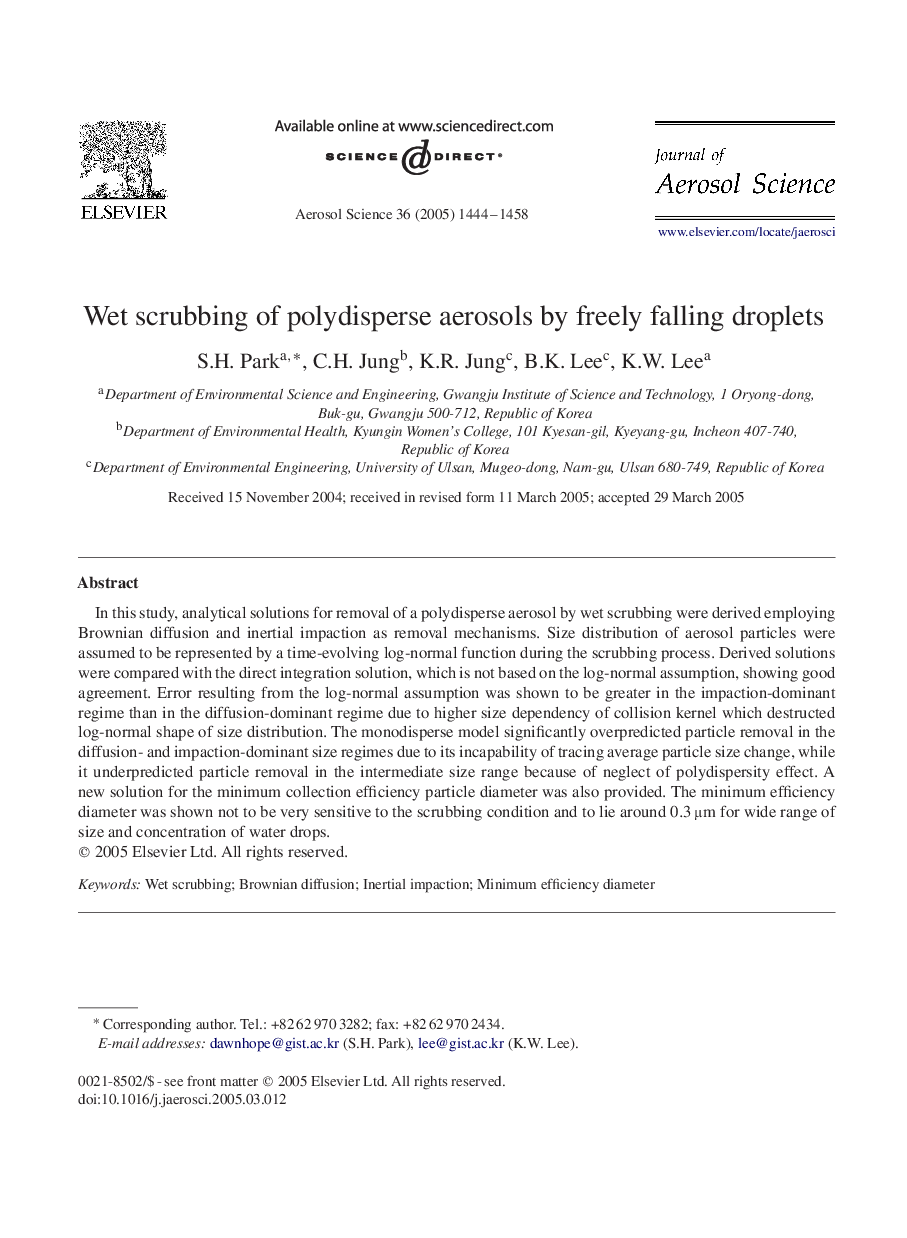| Article ID | Journal | Published Year | Pages | File Type |
|---|---|---|---|---|
| 9460448 | Journal of Aerosol Science | 2005 | 15 Pages |
Abstract
In this study, analytical solutions for removal of a polydisperse aerosol by wet scrubbing were derived employing Brownian diffusion and inertial impaction as removal mechanisms. Size distribution of aerosol particles were assumed to be represented by a time-evolving log-normal function during the scrubbing process. Derived solutions were compared with the direct integration solution, which is not based on the log-normal assumption, showing good agreement. Error resulting from the log-normal assumption was shown to be greater in the impaction-dominant regime than in the diffusion-dominant regime due to higher size dependency of collision kernel which destructed log-normal shape of size distribution. The monodisperse model significantly overpredicted particle removal in the diffusion- and impaction-dominant size regimes due to its incapability of tracing average particle size change, while it underpredicted particle removal in the intermediate size range because of neglect of polydispersity effect. A new solution for the minimum collection efficiency particle diameter was also provided. The minimum efficiency diameter was shown not to be very sensitive to the scrubbing condition and to lie around 0.3μm for wide range of size and concentration of water drops.
Related Topics
Physical Sciences and Engineering
Earth and Planetary Sciences
Atmospheric Science
Authors
S.H. Park, C.H. Jung, K.R. Jung, B.K. Lee, K.W. Lee,
